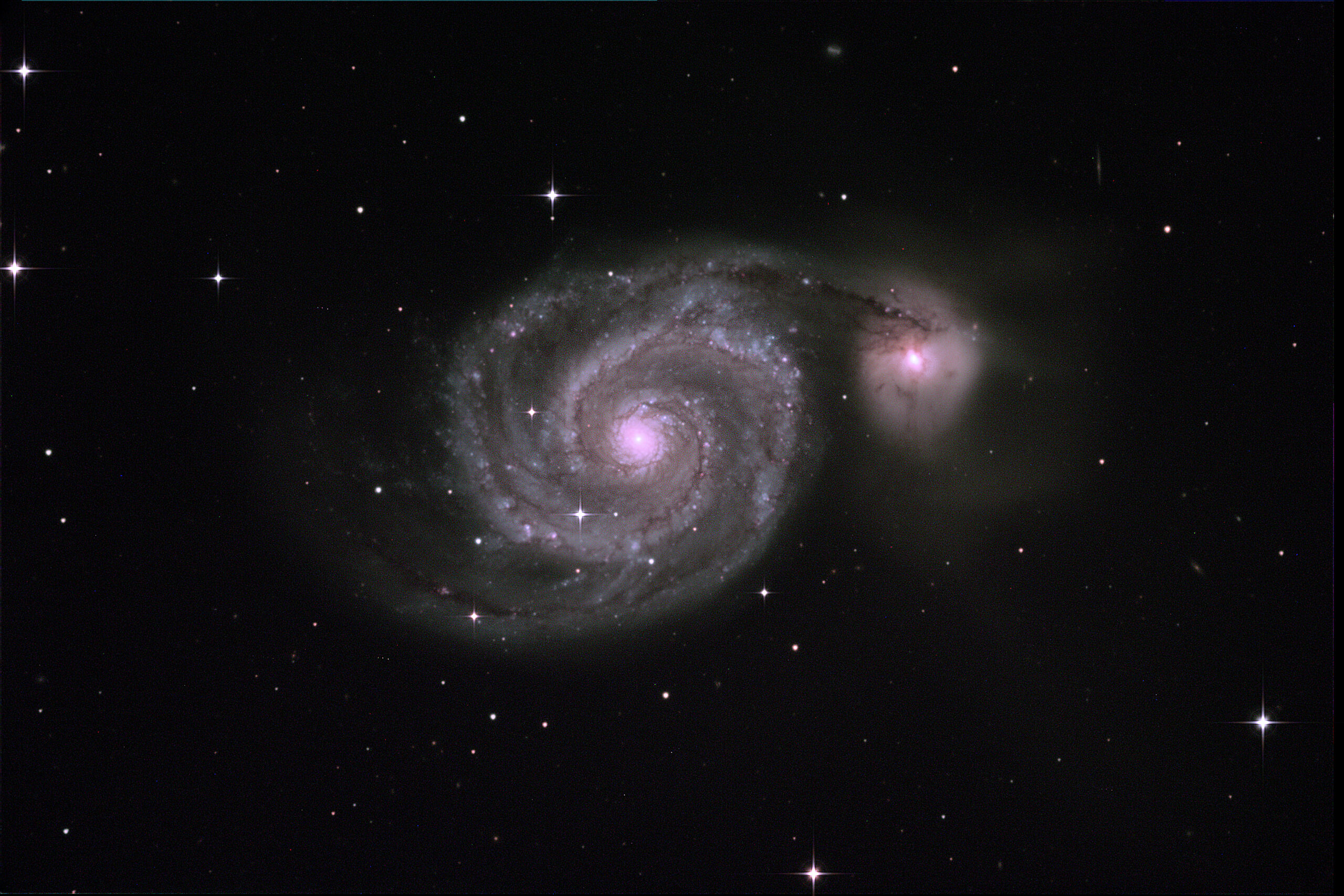M51 is a large "face on" spiral galaxy just below the end of the "handle" of the Big Dipper on the border of the Ursa Major and Canes Venatci constallations. There are several interesting features of this galaxy.
First, it is enormous. With an angular dimension of 11' (one third the apparent size of a full Moon) and a computed distance of 23 million light years, its true diameter is 100,000 light years (diameter = 0.00029 x distance x angular size).
Second, it contains an estimated 150 billion stars.
Third, the most conspicuous feature of the galaxy is the smaller galaxy (the bright oval at the end of one of the galaxy's arms) with which it is interacting. The smaller companion (NGC5195) is slightly "redder" in color because it is behind the enormous dust cloud connecting the two objects which is clearly visible in this image. According to the physical principle of "Rayleigh scattering," light is scattered by small gas particles according to the formula λ ^-4, meaning that shorter wavelength "blue" photons (400nm) are scattered up to 10x more than longer wavelength red photons (700nm). This is why the sky is blue. It also means that we see the minimally scattered red photons as light passes through an intervening gas cloud. This results in red sunsets, and explains why the background galaxy in this image is more red than M51 itself.
Fourth, M51 is the first galaxy whose "spiral" structure was detected. Lord Rosse (William Parsons), using his 72" speculum telescope (the "Leviathan") in Parsonstown, Ireland, was able to detect the spiral structure in 1845. He did not know if M51 was a gas nebula in our Milky Way galaxy, or a separate galaxy an unimaginable distance away, but he and many 19th century astronomers assumed that the "spiral nebulae" that increasingly were observed with larger telescopes and photographic plates were emerging solar systems in our Milky Way galaxy, thereby lending support to the view that the universe consisted of one galaxy. This question was not conclusively resolved for another 85 years when Edwin Hubble, using the Hooker Telescope on Mt. Wilson in southern California, was able to resolve individual stars in the Andromeda Galaxy, refuting conclusively the so-called "nebular hypothesis" and demonstrating that the spiral nebulae were in fact separate galaxies. Hubble demonstrated that we live in a universe of galaxies.
December 2016
Location Taken:Misti Mountain Observatory, NW Arizona
Conditions of Location: Equipment Used:32" Ritchey-Chretien telescope, SBIG STL11000 CCD camera
Processing Used:Image acquisition by Jim Misti, processing by Richard Hammar using Maxim DL and Photoshop
Distance from Location:23 million ilght years
Constellation:Canes Venatici
Other Link:

Wow! Thanks for the education!